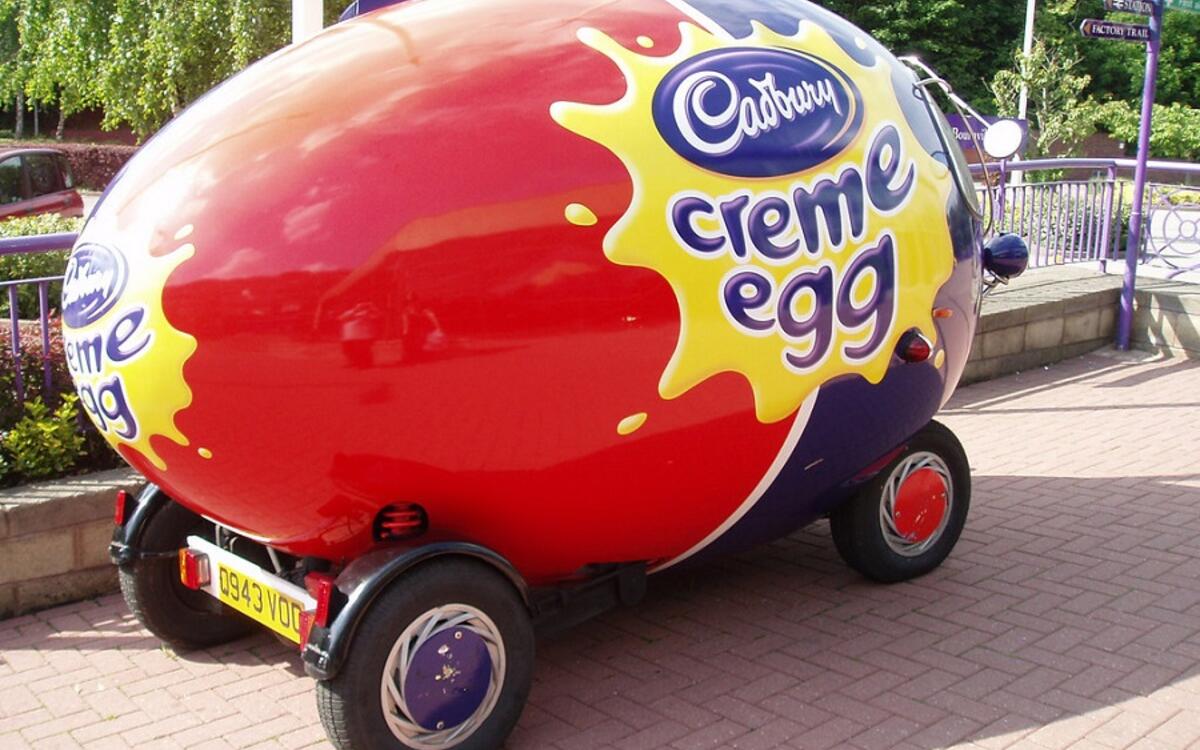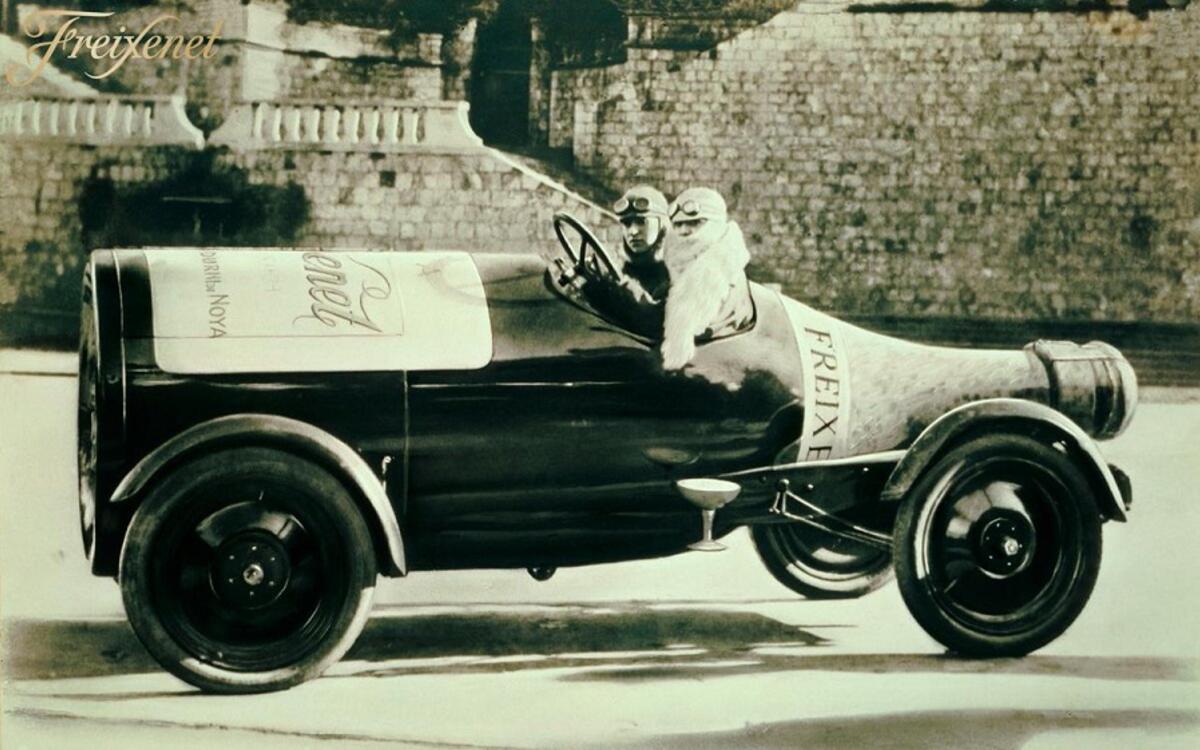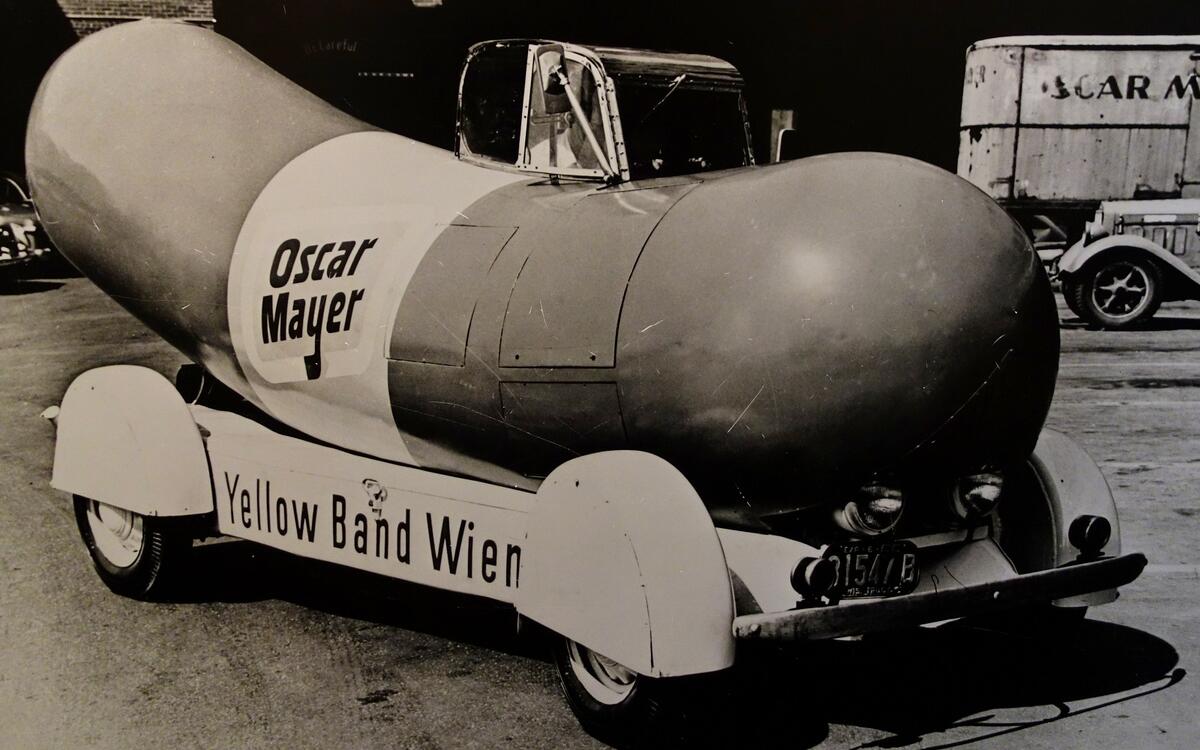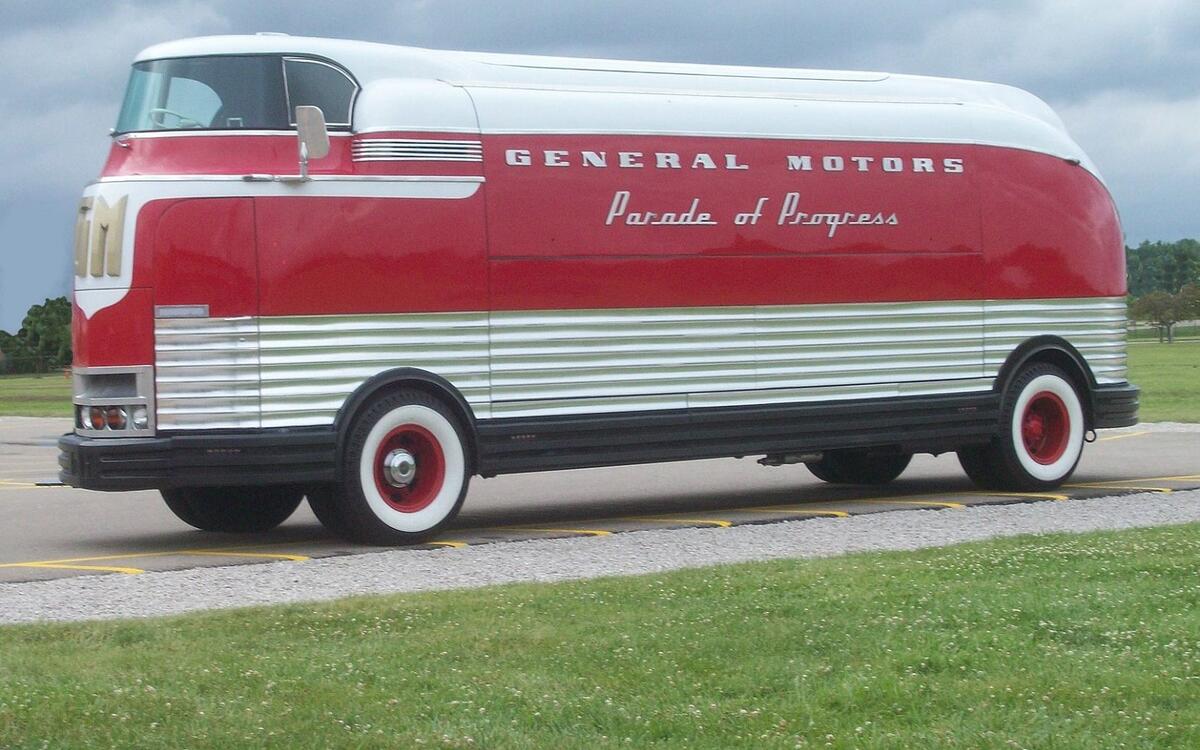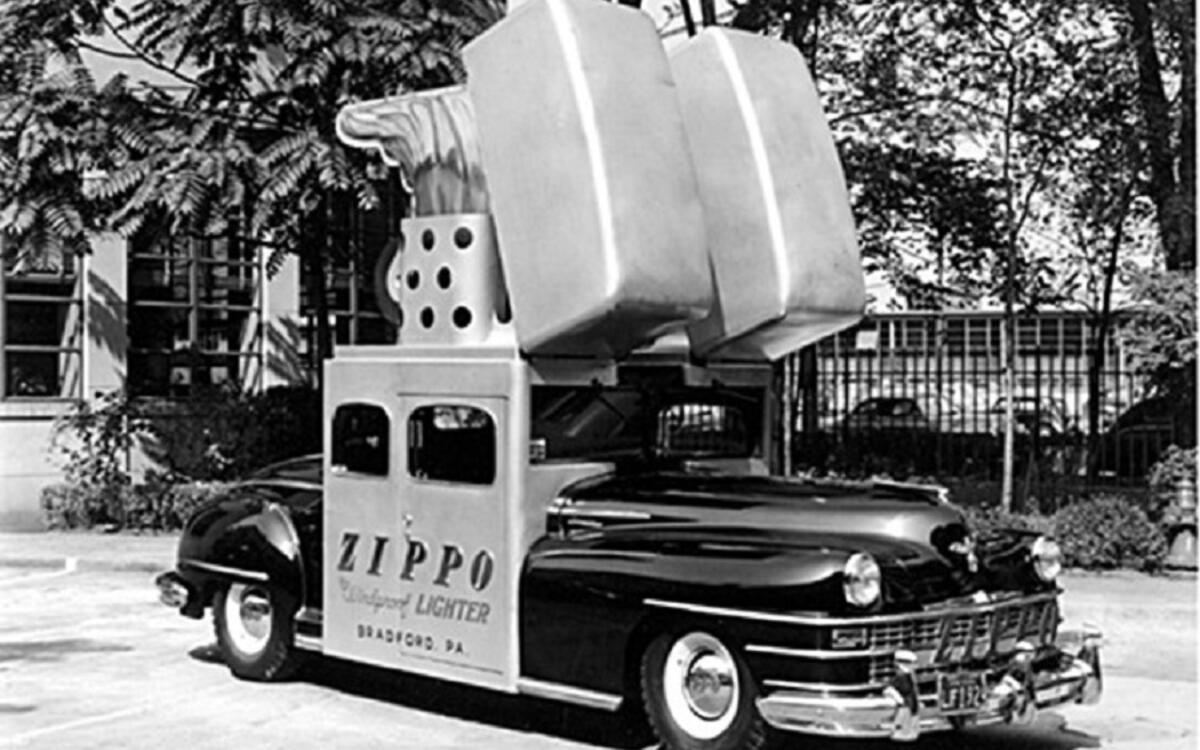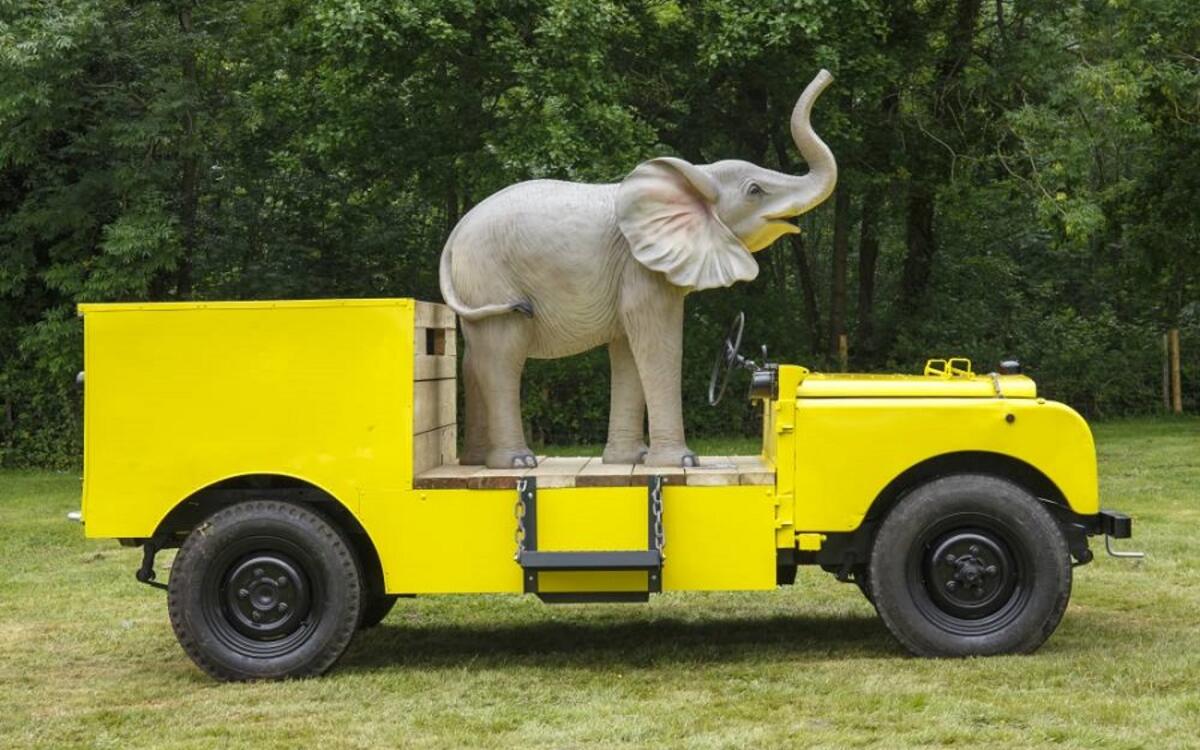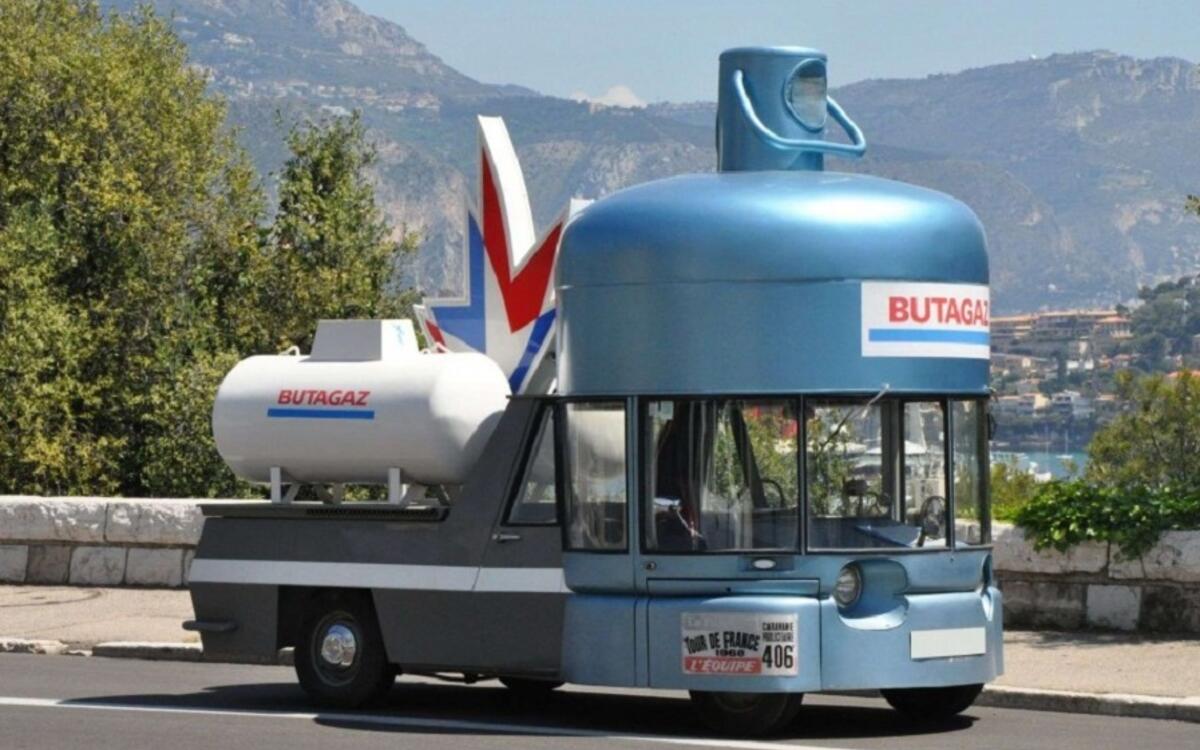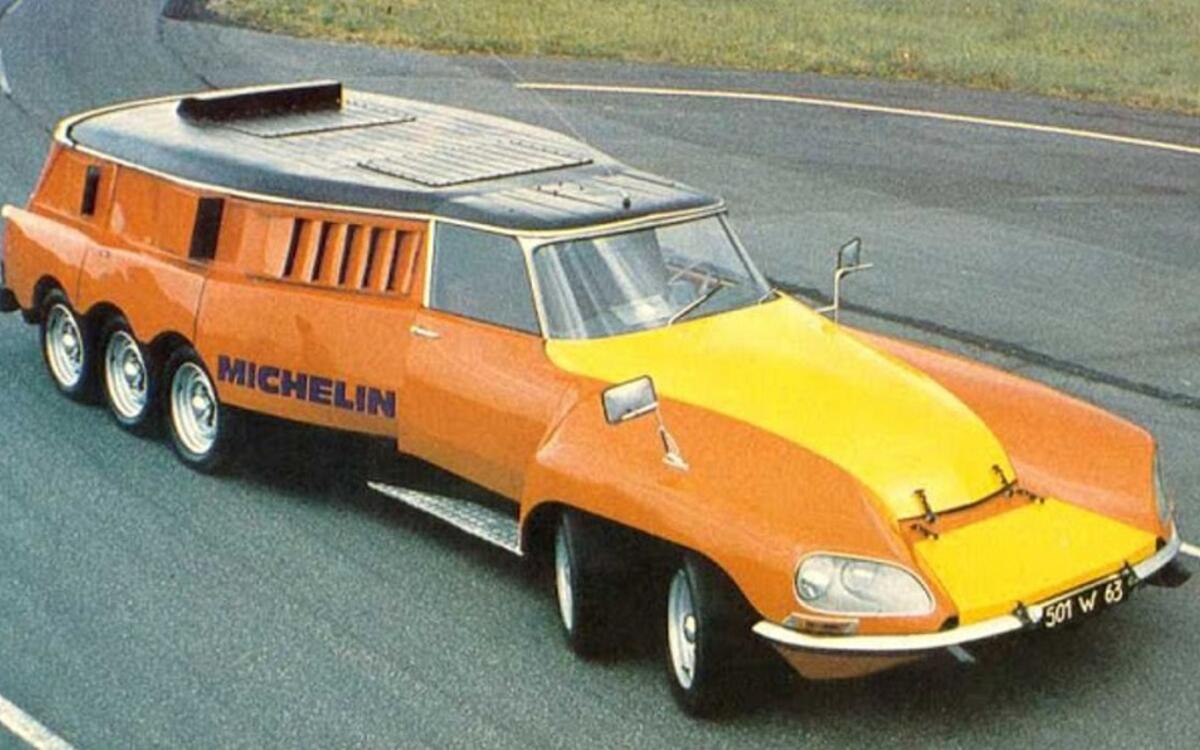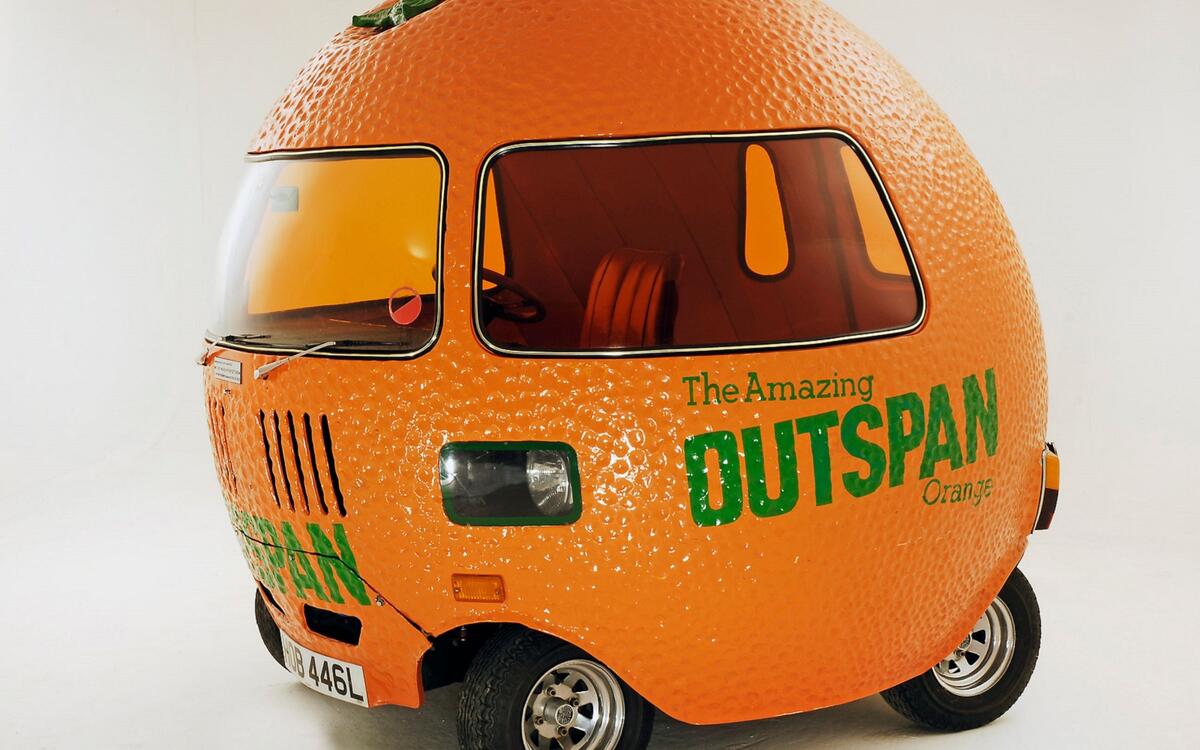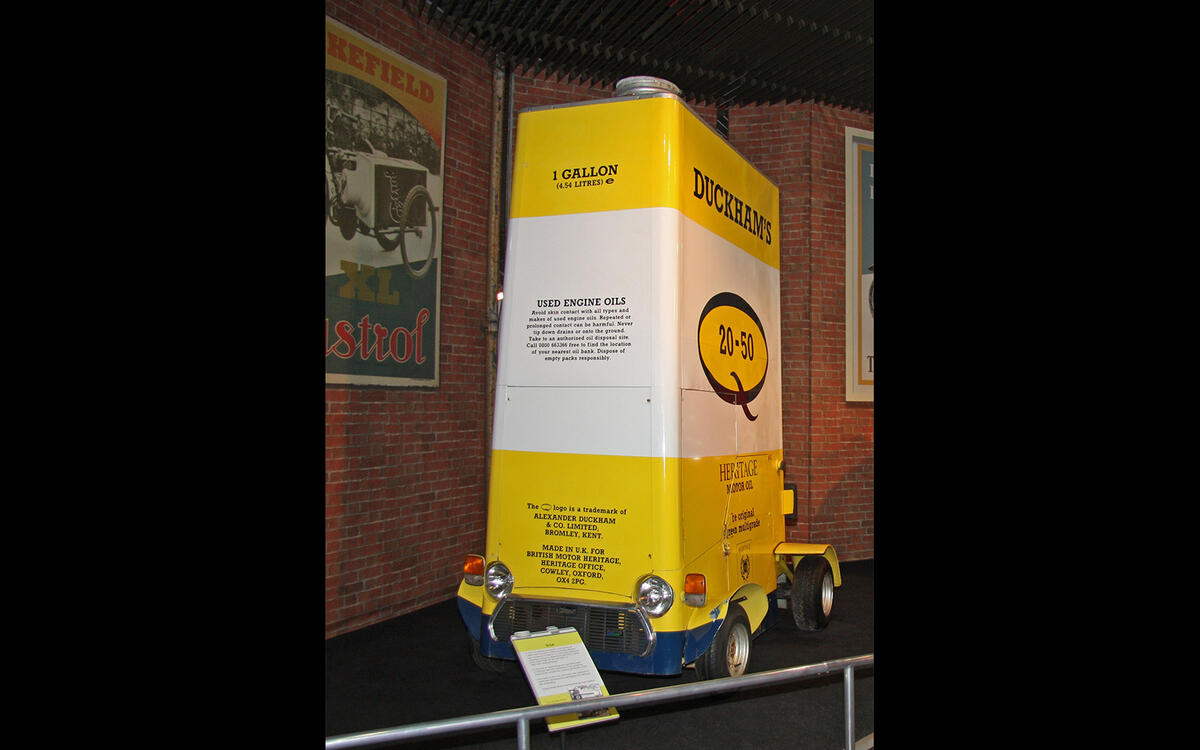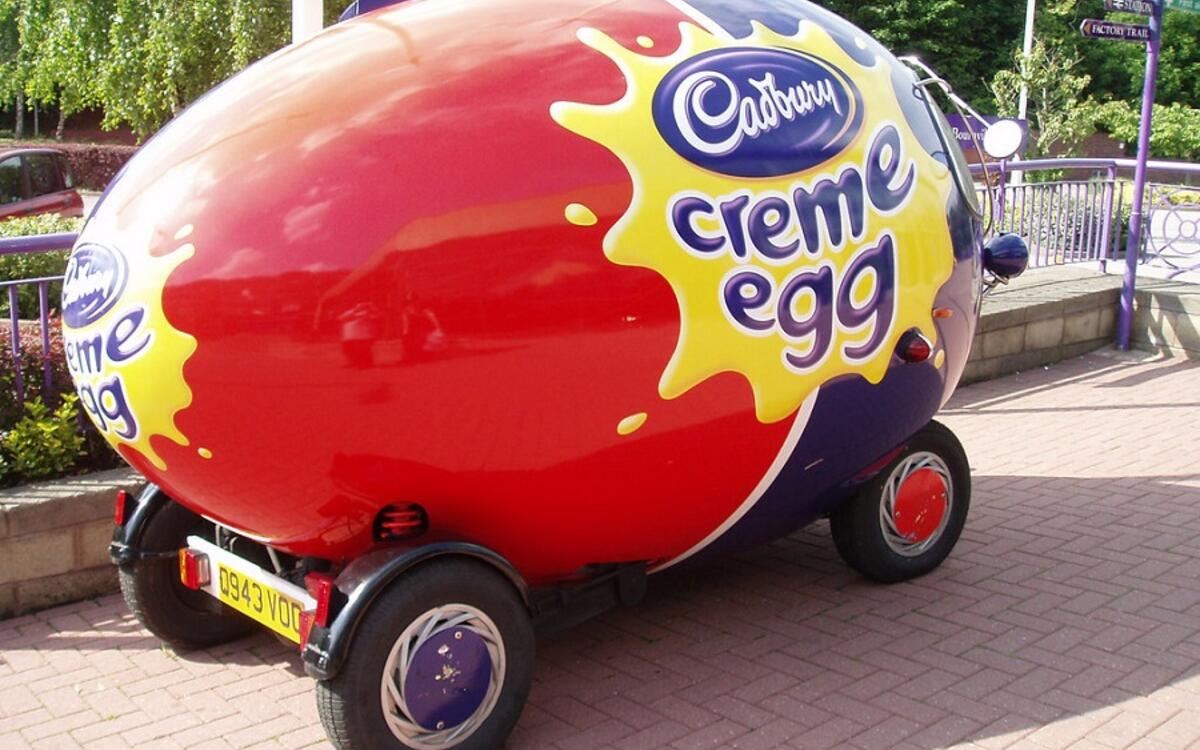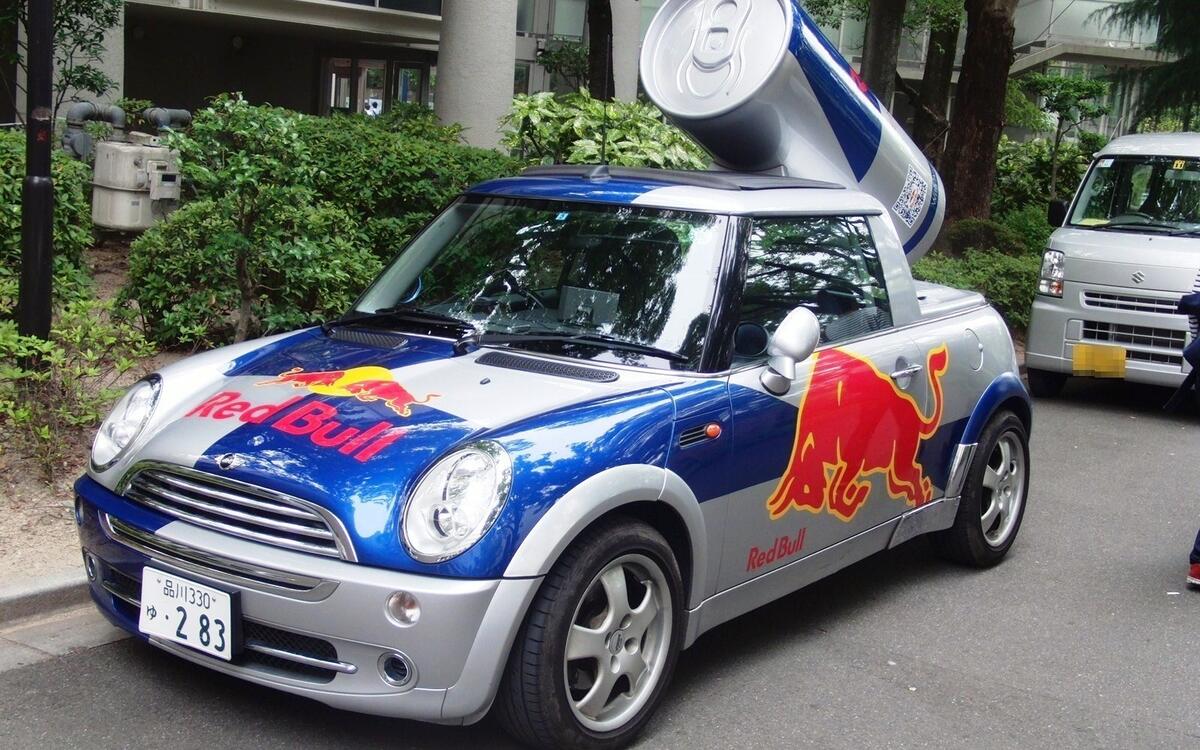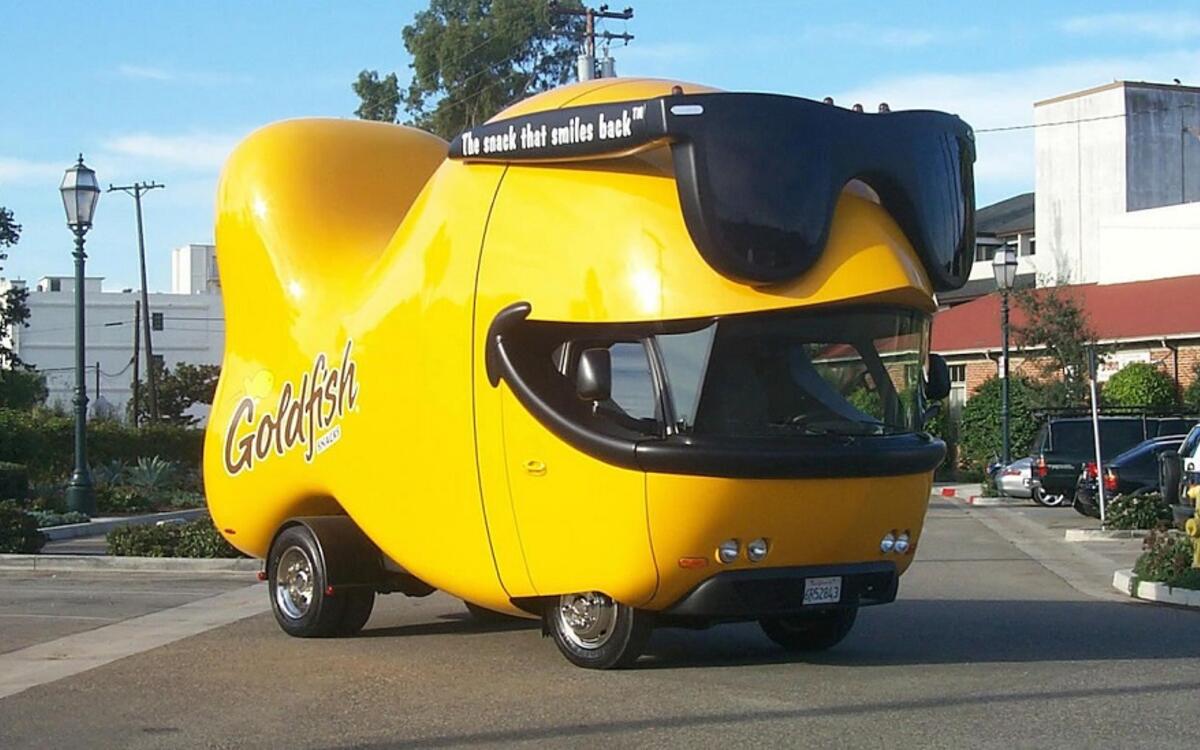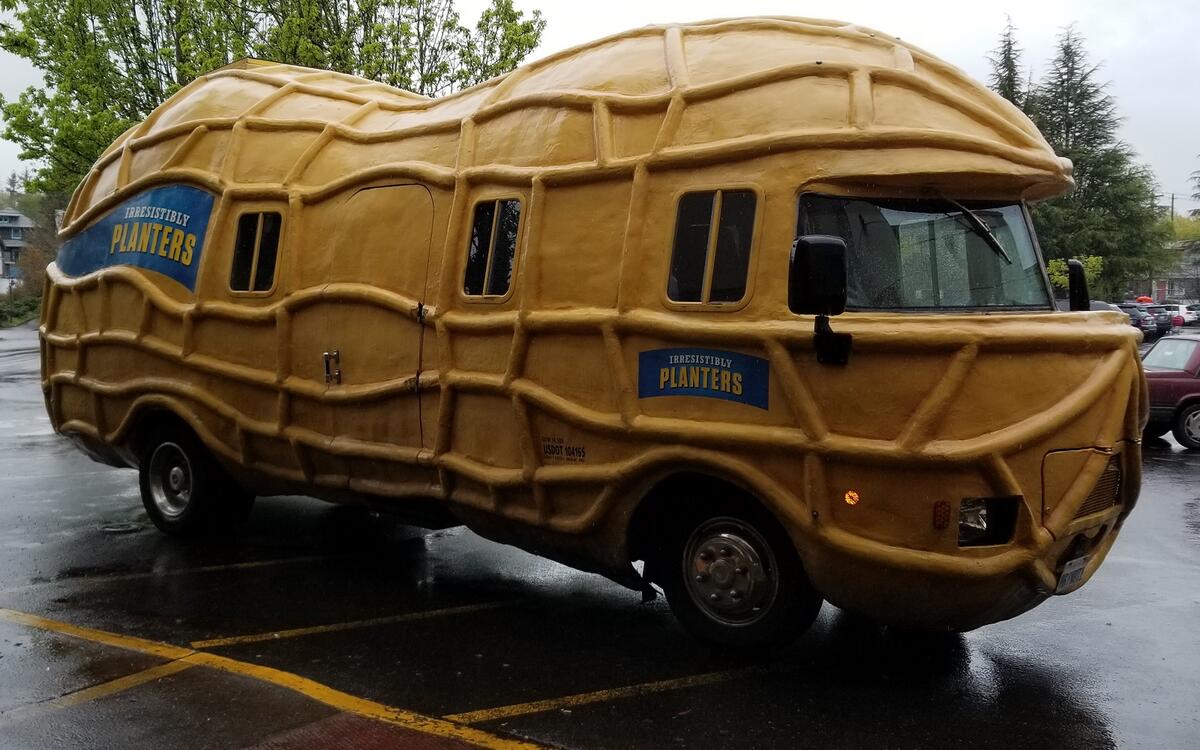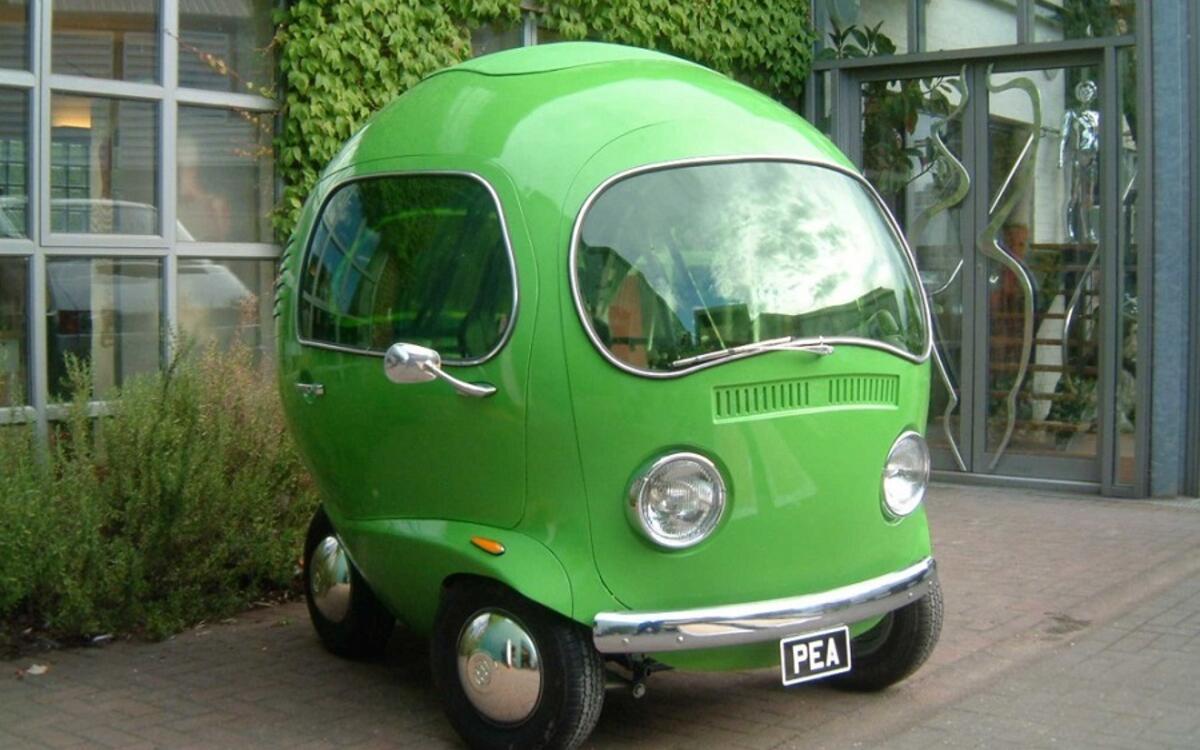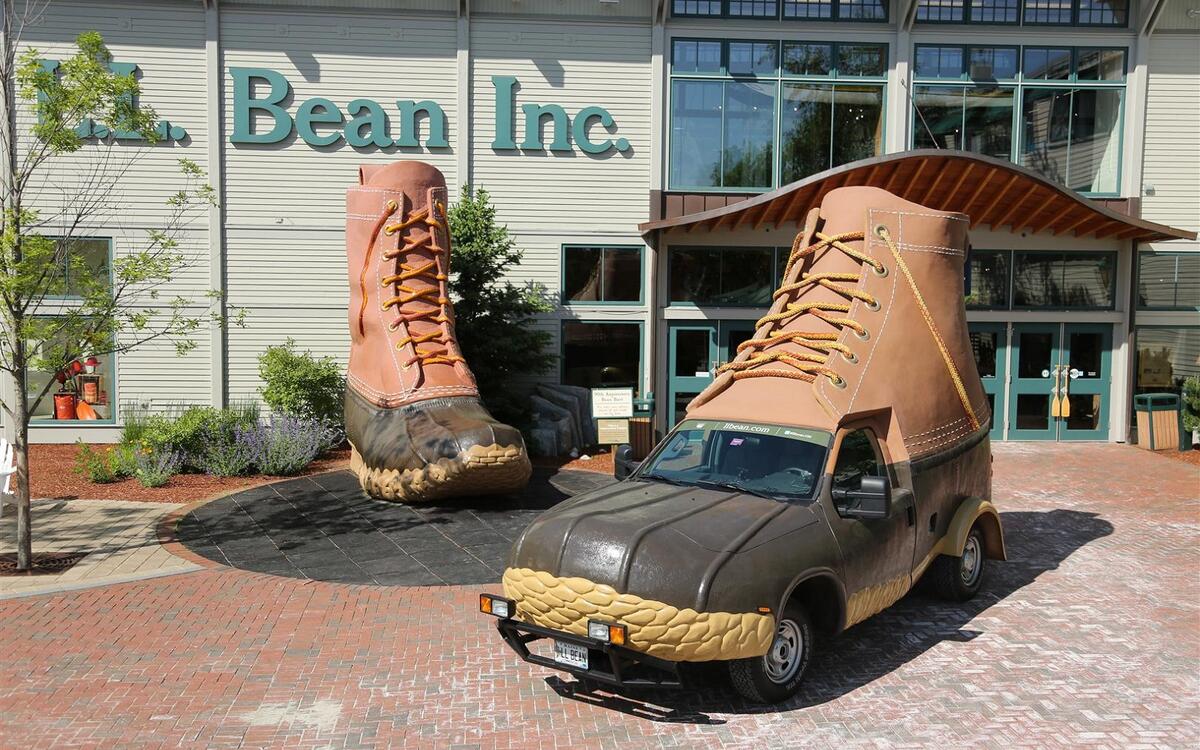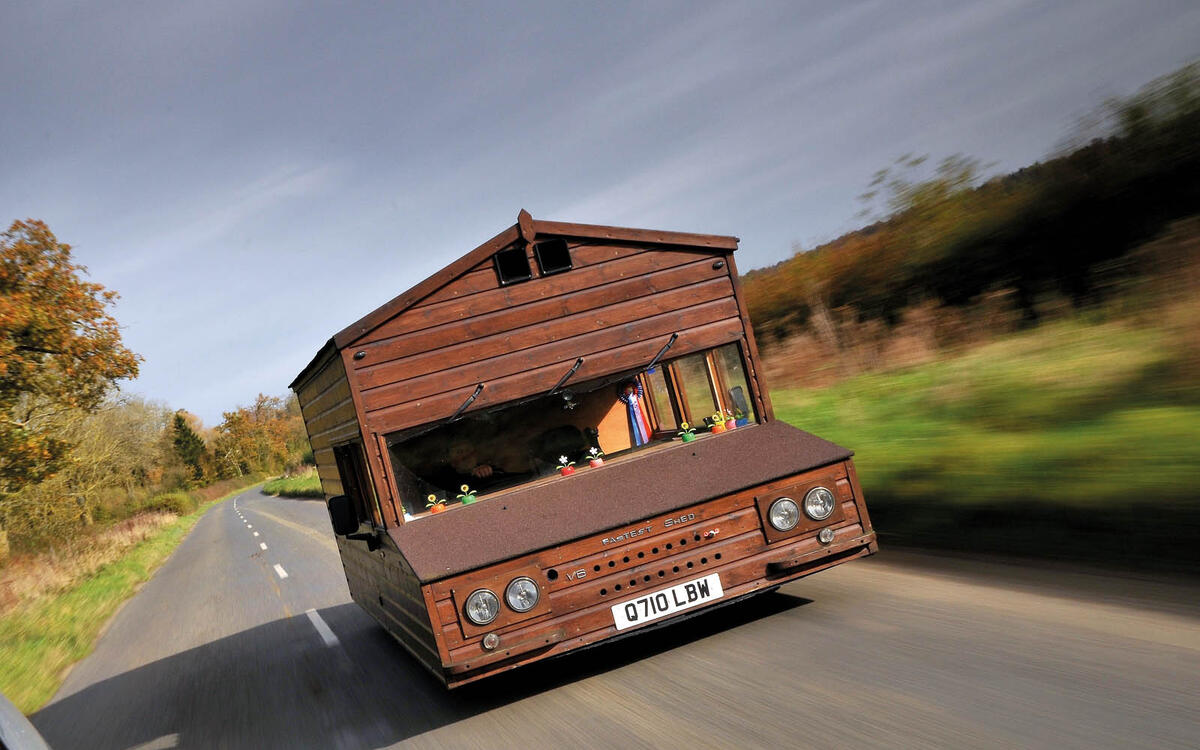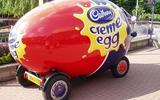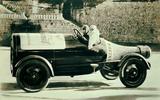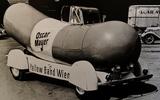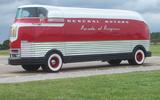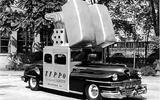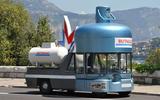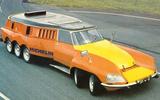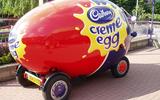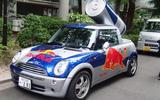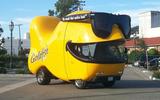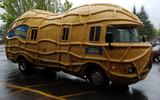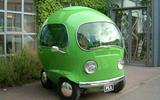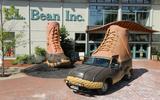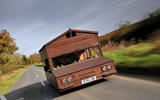 Slide of
Slide of
Whatever you’re selling, it can only ever be made better when there’s a promotional vehicle made in its image
From peanuts to energy drink, elephants to oil cans, promotional vehicles have come in all sizes and shapes to amuse, advertise and even act as scientific laboratories. There have been promotional vehicles selling the wares of all sorts of companies since the 1920s. Some have been better at selling their products than others, so here’s our pick of the best, starting with the earliest.
 Slide of
Slide of
Freixenet cava bottle car – 1929
Cava maker Freixenet has been keen on oddball promotional vehicles for a long time, going right back to the original made for the 1929 World Fair in Barcelona. It’s based on a Hispano-Suiza chassis, with the neck of the bottle forming the tapered rear end of the car. There’s even a handy wine glass-shaped step to help the driver into the cockpit.
The car still exists and is parked outside the entrance to the winery in Spain to welcome visitors. And Freixenet continues its interest in speed as the official cava supplier to MotoGP.
 Slide of
Slide of
Wienermobile – 1936
When hot dog maker Oscar Wiener wanted to promote his firm’s porcine delights, he came up with the first Wienermobile in 1936. It used a bespoke chassis with a body in the shape of a giant sausage. After World War Two, when fuel rationing eased, more promotional vehicles were made on Dodge and Jeep chassis in 1952.
After that, regularly updated models would arrive on ever larger platforms to make a bigger impact and motorhomes were often used for their easy conversion. The hot dog bodies are mostly made from glassfibre and can seat up to eight passengers. All have been used in parades, school visits and to raise money for charities.
 Slide of
Slide of
GM Futurliner – 1939
Where most promotional vehicles are made to advertise a particular product, the GM Futurliner has more in common with today’s motor show concept cars. It was the brainchild of GM’s famous design guru, Harley Earl, as a showcase for GM’s new technologies.
A total of 12 Futurliners were built in 1939 and each was notable for the art deco style that Earl was noted for. A 302cu in (5.0-litre) straight six engine powered the 12-tonne machines, which stood 3.3m tall, 2.4m wide and 10m long. The driver sat perched in a high central position with panoramic windscreen, while the rear was devoted to a display of technology such as the microwave oven and stereophonic sound.
 Slide of
Slide of
Zippo – 1948
The heyday of promotional vehicles in 1940s America coincided with a time when smoking was still considered a safe pastime. To make the most of this, lighter manufacturer Zippo commissioned its own vehicle based on a 1947 Chrysler New Yorker. The centre section was a scale replica of one of its famous lighters, complete with flip top and flame.
The height of the Zippo car meant its drivers had to be very careful when approaching bridges, but that didn’t stop them taking the car to all 48 contiguous states of the US. This original Zippo car disappeared in the 1950s and was never found, but Zippo recreated it in 1998 based on another Chrysler New Yorker.
 Slide of
Slide of
Bertram Mills Circus Elephant Land Rover – 1950
When showbusiness is your living, you need a promotional vehicle to beat all others and that’s exactly what the Bertram Mills Circus came up with. Based on a Land Rover, it appeared as if Kam, the circus elephant, was driving the car from a centrally-mounted steering wheel.
The real driver was hidden under the box that doubled as Kam’s seat and it’s thought that it could get rather hot, wet and smelly in there. Extended controls allowed the driver to steer, brake and accelerate, and it used a left-hand-drive configuration to allow enough space for the driver’s legs. The 1950 Series 1 Land Rover is now restored and part of the Dunsfold Collection.
 Slide of
Slide of
Butagaz – 1962
The French have always had a penchant for unusual vehicle styling, but even by their standards, the Butagaz car stands out. Seven of these vehicles were made, each seemingly plumped on a Simca 1000 to provide the propulsion and with the steering modified to allow the driver to sit further forward.
The Butagaz cars were built as part of the tradition of promotional vehicles that make up the Tour de France caravan as it travels around the country each July. To make sure the Butagaz cars got noticed in this melee, each had loudspeakers above the cab to blare out advertising messages.
 Slide of
Slide of
Michelin PLR – 1972
The Michelin Poids Lourde Rapide (PLR) was not intended as a promotional vehicle but a scientific test bed for truck tyres. As such, it was fitted with 10 wheels of its own to provide a stable high-speed platform and two Chevrolet V8s – one to power the PLR and the other for the tyre being tested.
Such was the unique shape and scale of the PLR that it soon became more useful to Michelin as a promotional vehicle. It still exists and spends most of its time at the company’s museum in Clermont-Ferrand. However, the PLR still makes it out for occasional excursions, but not running up to its 110mph maximum speed.
 Slide of
Slide of
Outspan Orange Car – 1972
One of the best-known and loved promotional car, the Outspan Orange car was based on the Mini. Five were built in total by Brian Waite Enterprises between 1972 and 1974, with the cars being used in the UK, France, Germany and South Africa.
With a wheelbase of just 48in, which is even shorter than that of the Mini that donated its front and rear subframes, and mounted to a simple tubular chassis, the Outspan car has an incredible turning circle. An automatic gearbox made the cars easier to drive, although a safe top speed was reckoned to be 30mph and 90kg of ballast was needed in the floor to prevent it from rolling over.
 Slide of
Slide of
Duckham’s Q Mini – 1973
Few vehicles have so closely replicated the product they are promoting as the Duckham’s Q Mini. Yes, it’s based on a classic Mini and was built in the early 1970s to be used extensively in newspaper and television adverts where it appeared alongside that other icon of the Mini, Paddy Hopkirk.
Due to its height when first created, the body required 1m to be removed so the Duckham’s Q Mini could be used at more events, and a Ford rear axle was added to give a wider footprint and greater stability.
 Slide of
Slide of
Cadbury’s Creme Egg car – 1989
This seasonal treat led to the creation of one of the most loved and recognisable promotional vehicles ever with the Cadbury’s Creme Egg car. Based on a Bedford Rascal chassis and running gear, the ovoid glassfibre bodywork meant the original pedal box had to be repositioned much further back, making the car quite tricky to drive.
Several Creme Egg cars were made and used around the UK. All have a single door on the left-hand side to access the cramped cabin. In 1993, the car was immortalised by Corgi with a die-cast model car and originals still in their box are much prized by collectors.
 Slide of
Slide of
Red Bull Mini – 2003
These converted Minis must have been drinking their advertised product because there are hundreds of them on the roads around the world. The original conversion was carried out by Lagermax in Austria, where Red Bull is based, and the firm still produces a kit of parts to create a Wings Mini, as they’re known.
The kit includes added braces to keep the car’s strength when the roof of the hatch is removed to turn it into a pick-up-style car. A glassfibre can is then fitted to mounts and the car finished in the distinctive silver and blue colours of the firm. In the UK, convertor James Alpe carries out this work, while in the US, it’s A2Z FX, which has also transformed various other cars for Red Bull.
 Slide of
Slide of
Goldfish Crackers – 2006
Standing 7m long and 4m tall, the Goldfish Crackers car is always going to get noticed, which is just what the company intended when it commissioned the vehicle. It also wears a pair of 2.5m sunglasses perched above the cab, just in case you might mistake it for another vivid yellow, giant biscuit.
The job of creating the Goldfish Crackers car was given to Californian specialists Prototype Source, who also had to work out how to make the car in three dimensions from a two-dimensional cartoon. Based on a Nissan van, the curvy bodywork is big enough to hold five million of the snacks and is used to hand out free packs of the cheddar biscuit.
 Slide of
Slide of
The Nutmobile – 2011
Billed as the ‘nuttiest car in the world’, the Planter’s Peanut Nutmobile garners attention like few other wheeled vehicles. After all, it’s a 7.9m-long, 3.8m-tall mobile peanut that’s based on an Isuzu van and can seat up to eight ‘Peanutters’.
There are three Nutmobiles on the road at present, but the original idea goes back to the 1935 Peanut Car. In a typical tour, the Nutmobile can distribute up to 300,000 sample packs of nuts. Ask what it’s like to drive and the Peanutters reply that it’s ”as smooth as peanut butter”.
 Slide of
Slide of
Birdseye Pea Car – 2005
A small pea demands a small promotional car, so frozen food giant Birdseye based its Pea Car on a go-kart chassis. It uses a Honda engine and is capable of up to 50mph, which must be terrifying given its shape, centre of gravity and tiny wheelbase.
The Pea Car is also one of the more recent promotional cars to come on the scene as it was introduced in 2005 and made in London. Volkswagen fans will spot the Beetle headlights, which have been rotated 90deg to curve with the round bodywork, and campervan bonnet vent.
 Slide of
Slide of
LL Bean Bootmobile – 2012
A nifty play on words is just one of the things that makes the Bootmobile stand out in any crowd. Built for clothing company LL Bean to celebrate its centenary, the Bootmobile is styled after the company’s original Hunting Boot, which got it started in business.
Underneath the giant glassfibre bodywork, the sole of the Bootmobile is a Ford F-250 pick-up. It retained all-wheel drive and off-road tyres to continue the rugged shoe theme, although the vehicle spends its time taking part in parades and promotional events rather than plugging across rough terrain.
 Slide of
Slide of
Fastest Shed – 2015
Most promotional vehicles are trying to sell something, but Kevin Nicks’ Shed was created to raise money for the Katherine House Hospice. To prove his grand hutch on wheels was the best, Kevin took it to Pendine Sands, where it hit a top speed of 101mph.
Underneath the custom shiplap bodywork built by Kevin at home lies a Volkswagen Passat. The original 2.8-litre V6 engine has given way to a newer twin-turbo V6 with 250bhp from an Audi that, Kevin hopes, will help raise his existing record for the world’s fastest shed.
With many created as forms of mobile marketing, these are some of the most famous promotional cars ever put into production
Advertisement


